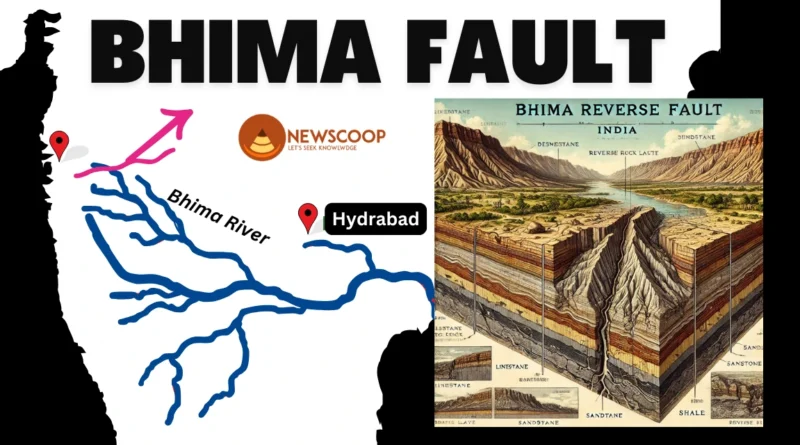Bhima Fault with Map
The Bhima Fault is a key geological feature in India, mainly found in the states of Maharashtra, and Karnataka. It plays an important role in the tectonic structure of the Deccan Plateau. This fault is classified as a reverse fault, meaning that it involves movement in the Earth’s crust that can significantly impact the landscape and seismic activity in the area.
Table of Contents
What is the Bhima Fault?
The Bhima Fault is a tectonic fault located in western India, where the Deccan Plateau meets the Western Ghats. A fault is a fracture in the Earth’s crust along which movement has occurred. The Bhima Fault is primarily a reverse fault, where one side of the fault is pushed upwards relative to the other. This movement is responsible for shaping the landscape in the region, including the course of rivers such as the Bhima River.
The fault stretches over 200 kilometers and is part of a larger network of geological structures that influence seismic activity in India. Due to its active nature, it plays an important role in the study of seismicity in the region, which is a major concern for urban planning and disaster management in nearby areas.
Key Characteristics of the Bhima Fault
- Location: The Bhima Fault stretches across Maharashtra and Karnataka.
- Type of Fault: It is a reverse fault, with one side of the fault pushed upwards.
- Seismic Activity: The fault is active and has been associated with moderate earthquakes in the region.
- Geological Impact: It influences the landscape of the Deccan Plateau and affects river courses, including the Bhima River.
- Length: The Bhima Fault stretches approximately 200 kilometers.
Related Topic: Deccan Traps
Seismic Events Related to the Bhima Fault
- Pune Earthquake – In the 1990s, Pune experienced mild seismic activity related to the Bhima Fault.
- Bhima River Basin Studies – Ongoing research on hydrology and sedimentation in the Bhima River Basin, influenced by the fault zone.
- Earthquake Risk Mapping – Initiatives by government agencies to map seismic risks in cities like Pune, Solapur, and Hyderabad, which are near the Bhima Fault.
So, this is all about the Bhima Fault and its geological significance. If you have any questions or would like to share your thoughts, feel free to comment below or reach out with your queries.

